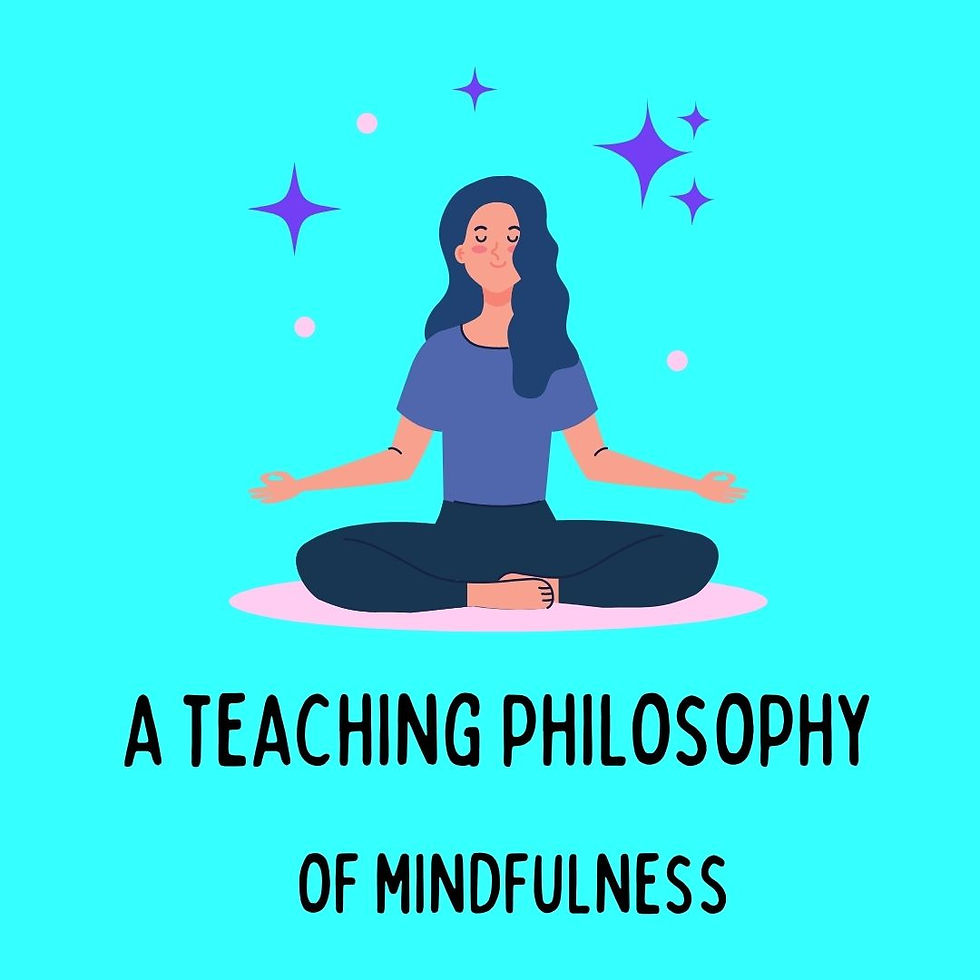A Teaching Philosophy of Mindfulness
- Adelaide Jones

- Jun 23, 2021
- 3 min read

“I’ve learned that people will forget what you said, people will forget what you did, but people will never forget how you made them feel.” -Maya Angelou.
I have realized that the content that I deliver to my students does not matter as much as the relationships I build. I believe that effective teaching is possible with connection, modeling self-care, grace, and a little vulnerability. My goal isn’t necessarily to teach what’s on the standards, but rather to foster a lifelong love of learning.
To create lifelong learners, we connect with students where they are.
I recognize that all students walk in the room with a backpack full of previous experiences that shape how they learn and how they interact with the world. I spend time studying my students before I expect real learning to happen. I greet them daily with a fresh start and a peaceful learning space.
I know who they live with, how much sleep they typically get a night, what they like to do for fun, who prepares the meals they eat, their typical diet, their exercise/movement patterns, hydration habits, and have documentation of their general mood trends all by the end of the first month of working together.
I am also vulnerable enough to share the same with them. I only ask my students to do what I am willing to do myself.
To create lifelong learners, I model self-care.
Learning can only happen when there is a space in the brain for that to happen. According to the center of disease control and prevention, roughly 1 in 4 students have an adverse childhood experience score of at least three. This means that it is almost a guarantee that there are students in the class who are actively experiencing trauma- especially with the latest research on this topic before the pandemic. Strategies that help heal trauma in students with a significant ACE score are beneficial to improve the mental health of all. Mindfulness practices are essential for successful learning space. My daily learning arc includes a 5-8 minute practice. I believe it’s essential to practice right along with the students and be aware of my mental wellbeing when working with my outstanding scholars.
To create lifelong learners, we must show grace and vulnerability.
Successful educators recognize students as perfectly imperfect. They also allow their students to see the same in themselves in an appropriate manner. As an example, if my student is having a hard time staying awake because their teenage siblings’ malnourished baby was keeping my student up at night-I will provide them with a pillow and a blanket to rest during my class with the understanding that the work will get done when possible. I will be aware enough of the student’s life experiences to understand their situation. I create a way for students to access learning when they can learn. I promise my students to meet them with kindness and grace. I promise to provide a space to allow them to be their weird, wild, and wonderful selves. I promise to admit my own shortcoming as they prevent me from being the best teacher I can, and in return, I trust my students to accept who I am each day and give me their best effort to learn.
It works. It’s kind, and it’s life-changing if done well.




Comments